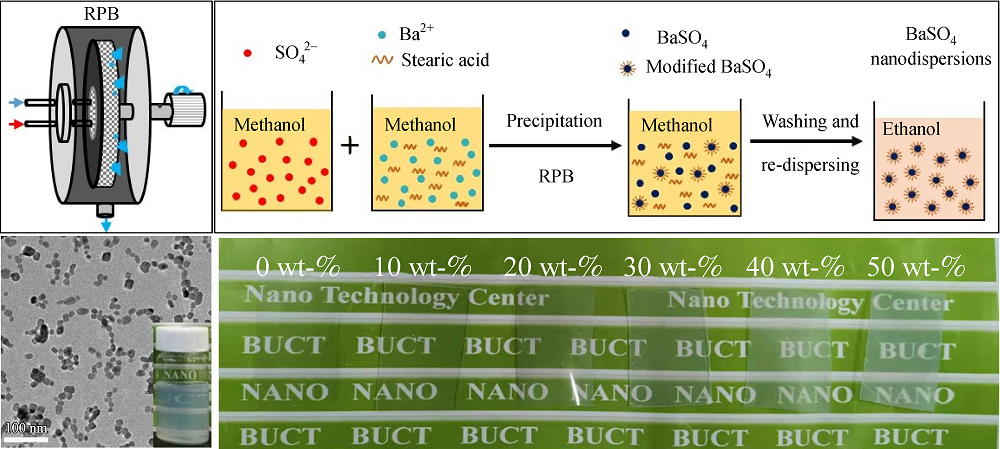There are a number of BaSO
4 nanoparticles preparation methods, such as direct precipitation [
7‒
10], microreactor [
11,
12], microemulsion [
13,
14] and template method [
15,
16]. For example, the direct precipitation is a widely used method, simply adding one precipitating agent to a metal salt solution to get ultrafine BaSO
4 nanoparticles. The existed problem for this method is that the product size is hard to control and size distribution is relatively broad [
7,
9]. Microreactor method usually involves using a designed microreactor, which contains diverse small channels (equivalent diameter less than 500 µm) to produce even and relatively small BaSO
4 nanoparticles, but with a low production capacity [
11]. The BaSO
4 nanoparticles made through microemulsion method are controllable and relatively small, however, the usage of surfactants, co-surfactants and solvents may cause some environmental pollutions [
13]. The template method means designing templates for preparing special structure BaSO
4 nanoparticles, according to the performance requirements and morphology of synthetic materials, but most of the processes are complicated, high-priced and not suitable for large-scale preparation [
15]. Therefore, it is necessary to develop a simple, cost-effective, highly efficient and environmentally friendly manufacturing technology to produce uniform and well dispersed BaSO
4 nanoparticles for various applications.















